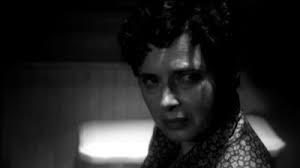Compelling supporting roles, moody photography can’t shake the feeling that this dish is a little undercooked
by Robert P. Young
April 12, 2017
Keith Sutliff, the baby-faced writer-star-director of The Mason Brothers, knows how to make smart moves. Setting his low-budget heist film close to home. Hiring an Oscar-winning cinematographer. Scheduling his shoots to accommodate actors with day jobs.
It still isn’t enough to make his debut feature a great film.
Setting us up for a Christopher Nolan-quality epic with drone shots of Los Angeles in the opening credits, The Mason Brothers lets us down with a claustrophobic, emotionally cold experience.
A bank heist gone wrong, with a beloved team-member killed in a shootout—we’ve seen it before in Reservoir Dogs. But while Dogs convinced us that strangers united by misfortune can forge unbreakable bonds, The Mason Brothers makes us wonder: why do these brothers even work together? They bicker; they differ on when or whether to get out of the “business” (their euphemism for bank robbing); after years of heists they are still cash poor. Allusions in dialogue to a past of shared ups-and-downs are not enough to truly show a family dynamic of brotherly cohesion.
Admittedly, the crime genre is fun, especially if you’re a young man and you want to play with cash and guns. But showing the toll that a life of violence takes the pen of a more seasoned screenwriter.
To be fair, sometimes Sutliff hits it out of the park with casting. Michael Ryan Whelan, whose death sets the story in motion, brings life to a limited role with his background in stand-up comedy. Compared to his somber, overwrought co-leads, Whelan feels like a three-dimensional character whose death we can believe is heavily felt.
Another standout is Julien Cesario’s crime boss, whose shark grin charms while plotting double-cross after double-cross.
Alas, the main leads, including Sutliff himself, a blustery Brandon Sean Pearson, and a hot-and-cold Matthew Webb, are not nearly as interesting or deep as the supporting characters. Sutliff is a problematic choice for the leader of a gang of bank robbers—he looks not that far out of high school and fails to convey the image of a hardened criminal. Pearson and Webb (as well as the entire film) are plagued by repeating dialogue that does not advance the story or add shade to their characters (a healthy trimming of the script in pre-production would have helped a lot).
Not surprising in this genre, women are given short shrift. Pearson’s argument with a superfluous girlfriend has no stakes (well, she is a gun moll), and Italian actress Carlotta Montanari is wasted as a go-between the brothers and her boyfriend Cesario. (She doesn’t even get a decent kiss, due to awkward cinematography.) With the limitations of budget forcing the story to depend on characterization, what a loss that we didn’t have a worthy femme fatale!
Errol Webber as cinematographer sets the tone with noir-ish lighting, although the mood is broken when shooting exteriors and in daylight. Taking cues from famed Japanese director Yasujirô Ozu, Webber’s framings create tension when the camera lingers on a face without a cutaway, or allows the actors to not-quite-leave frame while continuing heated arguments. This is a film devoted to close-ups—in order that we stay enmeshed in the interpersonal drama—but more shots like the beautiful view of nighttime Los Angeles during the opening credits would have given the movie much more production value and scope.
With all this said, the completion of a first-time, low-budget feature film is a monumental achievement. There is definitely talent here. As Sutliff matures as a filmmaker—perhaps even trades the crime genre for something more personal—we’ll get some good cinema.





.jpg)
